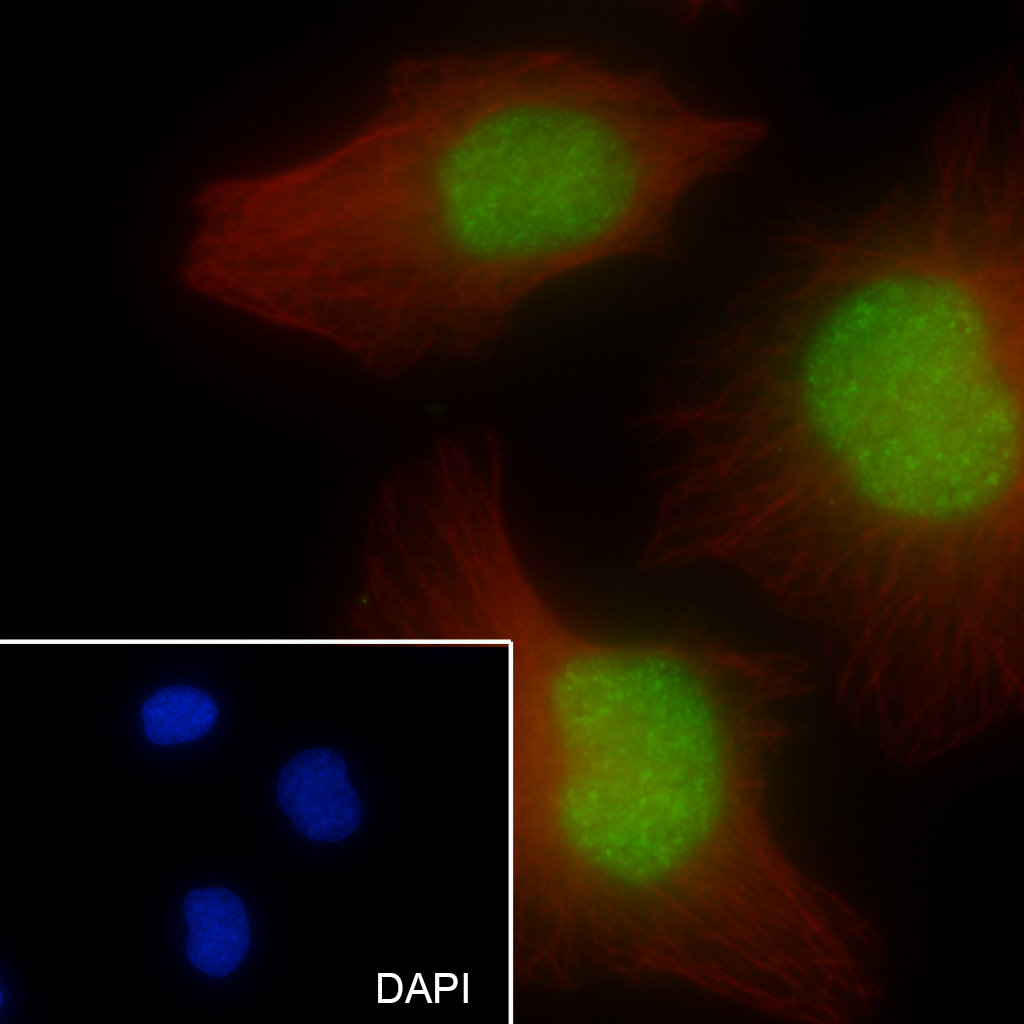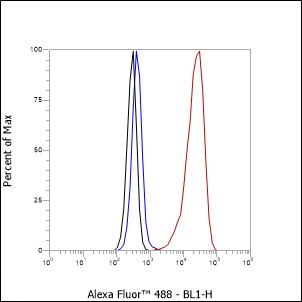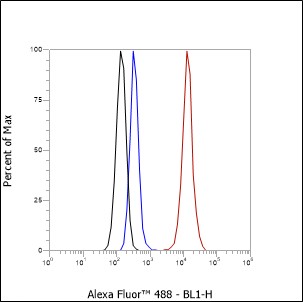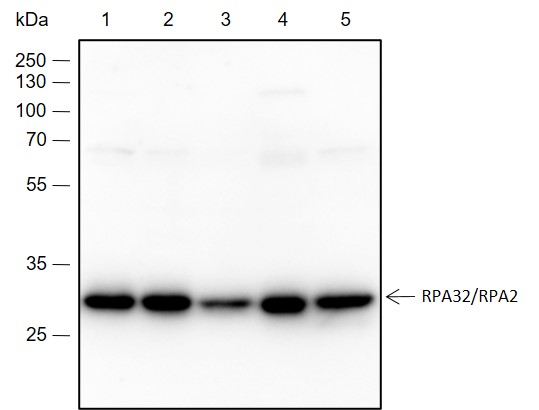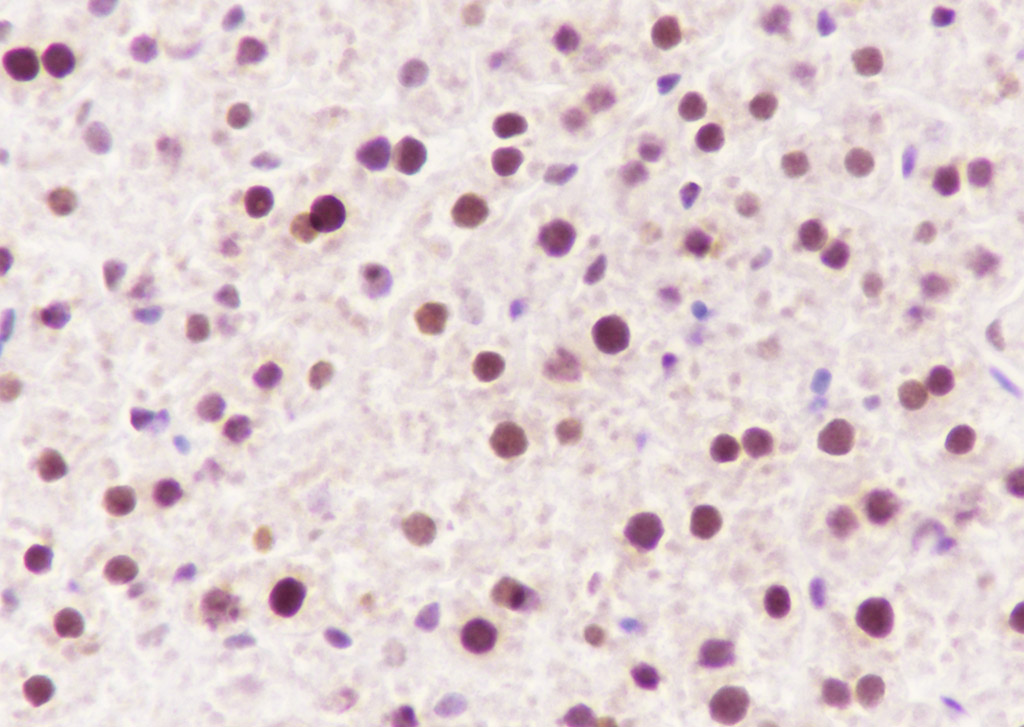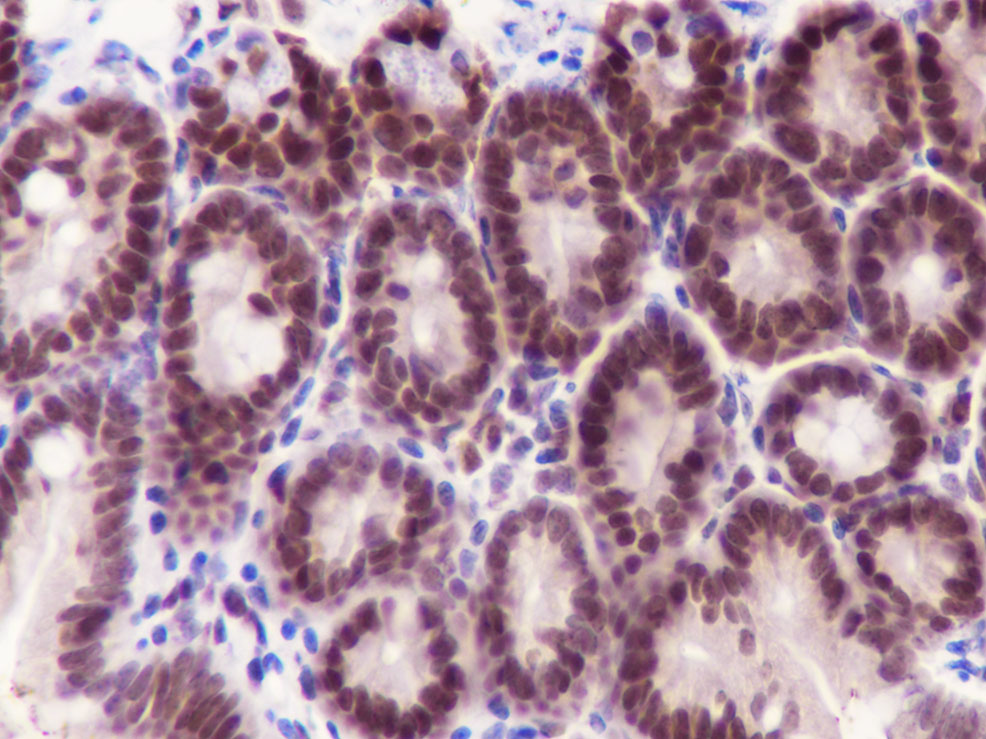RPA2 Recombinant Rabbit mAb
RPA2 Recombinant Rabbit mAb
- 产品详情
- 实验流程
- 背景知识
Application
| WB, IHC-P, IHC-F, IF, ICC |
|---|---|
| Host | Rabbit |
| Clonality | Recombinant |
| Calculated MW | 29 KDa |
| Physical State | Liquid |
| Isotype | IgG |
| Purity | affinity purified by Protein A |
| Buffer | 0.01M TBS (pH7.4) with 1% BSA, 0.02% Proclin300 and 50% Glycerol. |
| SUBCELLULAR LOCATION | Nucleus. Nucleus, PML body. Note=Also present in PML nuclear bodies. Redistributes to discrete nuclear foci upon DNA damage. |
| SUBUNIT | Heterotrimer of 70, 32 and 14 kDa chains (canonical replication protein A complex). Component of the alternative replication protein A complex (aRPA) composed of RPA1, RPA3 and RPA4. The DNA-binding activity may reside exclusively on the 70 kDa subunit. Binds to SERTAD3/RBT1. Interacts with TIPIN. Directly interacts with PPP4R2, but not with SMEK2; this interaction is DNA damage-dependent and leads RPA2 dephosphorylation by PPP4C recruitment. Interacts with RAD51, preferentially when hyperphosphorylated. Directly interacts with RFWD3. |
| Post-translational modifications | Phosphorylated in a cell-cycle-dependent manner (from the S phase until mitosis). In response to DNA damage, recruited to DNA-repair nuclear foci, as a hypophosphorylated form. The necessary dephosphorylation step is catalyzed by PP4. Subsequent hyperphosphorylation, catalyzed by ATR, is required for RAD51 recruitment to chromatin and efficient DNA repair. Can be phosphorylated in vitro by PRKDC/DNA-PK in the presence of Ku and DNA, and by CDK1. Phosphorylation at Thr-21 depends upon RFWD3 presence. |
| Important Note | This product as supplied is intended for research use only, not for use in human, therapeutic or diagnostic applications. |
| Background Descriptions | Required for DNA recombination, repair and replication. The activity of RP-A is mediated by single-stranded DNA binding and protein interactions. Functions as component of the alternative replication protein A complex (aRPA). aRPA binds single-stranded DNA and probably plays a role in DNA repair; it does not support chromosomal DNA replication and cell cycle progression through S-phase. In vitro, aRPA cannot promote efficient priming by DNA polymerase alpha but supports DNA polymerase delta synthesis in the presence of PCNA and replication factor C (RFC), the dual incision/excision reaction of nucleotide excision repair and RAD51-dependent strand exchange. |
| Dilution | WB=1:500-1:2000,IHC-P=1:100-500,IHC-F=1:100-500,ICC/IF=1:50,IF=0,Flow-Cyt=1:50-1:100 |
|---|---|
| Format | 0.01M TBS(pH7.4) with 1% BSA, 0.09% (W/V) sodium azide and 50% Glyce |
| Storage | Store at -20 °C for one year. Avoid repeated freeze/thaw cycles. When reconstituted in sterile pH 7.4 0.01M PBS or diluent of antibody the antibody is stable for at least two weeks at 2-4 °C. |
Research Areas
For Research Use Only. Not For Use In Diagnostic Procedures.
Application Protocols
Provided below are standard protocols that you may find useful for product applications.
BACKGROUND
This product as supplied is intended for research use only, not for use in human, therapeutic or diagnostic applications.
终于等到您。ABCEPTA(百远生物)抗体产品。
点击下方“我要评价 ”按钮提交您的反馈信息,您的反馈和评价是我们最宝贵的财富之一,
我们将在1-3个工作日内处理您的反馈信息。
如有疑问,联系:0512-88856768 tech-china@abcepta.com.























 癌症的基本特征包括细胞增殖、血管生成、迁移、凋亡逃避机制和细胞永生等。找到癌症发生过程中这些通路的关键标记物和对应的抗体用于检测至关重要。
癌症的基本特征包括细胞增殖、血管生成、迁移、凋亡逃避机制和细胞永生等。找到癌症发生过程中这些通路的关键标记物和对应的抗体用于检测至关重要。 为您推荐一个泛素化位点预测神器——泛素化分析工具,可以为您的蛋白的泛素化位点作出预测和评分。
为您推荐一个泛素化位点预测神器——泛素化分析工具,可以为您的蛋白的泛素化位点作出预测和评分。 细胞自噬受体图形绘图工具为你的蛋白的细胞受体结合位点作出预测和评分,识别结合到自噬通路中的蛋白是非常重要的,便于让我们理解自噬在正常生理、病理过程中的作用,如发育、细胞分化、神经退化性疾病、压力条件下、感染和癌症。
细胞自噬受体图形绘图工具为你的蛋白的细胞受体结合位点作出预测和评分,识别结合到自噬通路中的蛋白是非常重要的,便于让我们理解自噬在正常生理、病理过程中的作用,如发育、细胞分化、神经退化性疾病、压力条件下、感染和癌症。

